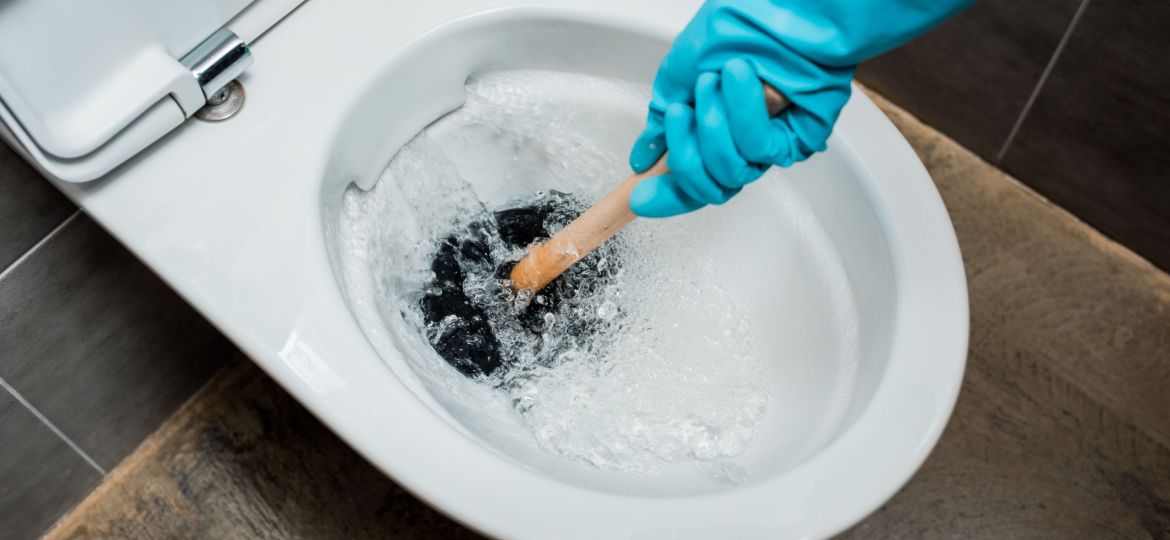
The Best Tricks and Tips to Effectively Unclog a Stopped Toilet
A clogged toilet can be an annoying and stressful situation, but with the right techniques, you can clear the blockage quickly and efficiently. Whether you’re dealing with a minor clog or a stubborn blockage, this comprehensive guide will walk you through the best tricks and tips to unclog a toilet effectively.
1. Assess the Situation Before Acting
Before you dive into unclogging, take a moment to assess the situation:
- Determine the Severity: Is the toilet draining slowly, or is it completely backed up?
- Avoid Flushing Repeatedly: Flushing a clogged toilet can cause overflowing and make the situation worse.
- Check for Foreign Objects: If a non-flushable item (e.g., toys, wipes, or feminine hygiene products) is causing the clog, it may require manual removal.
2. Essential Tools for Unclogging a Toilet
To tackle a clogged toilet effectively, you’ll need the right tools:
- A Flange Plunger – The best type of plunger for toilets, designed with an extra rubber flange for better suction.
- Toilet Auger (Plumbing Snake) – A flexible tool that reaches deep into the pipes to clear stubborn blockages.
- Rubber Gloves – To keep your hands clean and protected.
- Baking Soda & Vinegar – A natural and effective solution to break down minor clogs.
- Hot Water & Dish Soap – Helps loosen debris and make plunging easier.
3. Use a Plunger – The First Line of Defense
A plunger is often the best tool for unclogging a toilet. Here’s how to use it effectively:
Step-by-Step Plunging Technique
- Ensure the Plunger Forms a Seal – Position the flange of the plunger into the drain opening.
- Submerge the Plunger in Water – If necessary, add water to the bowl to create better suction.
- Use Firm, Controlled Strokes – Push down and pull up forcefully but steadily.
- Repeat 15-20 Times – Keep going until the water starts draining.
- Test by Flushing – Once the clog loosens, flush to ensure proper drainage.
4. Use Hot Water and Dish Soap for Minor Clogs
If the plunger doesn’t work right away, try this simple trick:
- Add Dish Soap – Squirt a generous amount of liquid dish soap into the toilet bowl.
- Pour Hot Water – Use a bucket to pour hot (not boiling) water into the bowl.
- Wait 15 Minutes – Allow the mixture to break down the clog.
- Try Flushing – If water drains normally, the clog has been resolved.
5. The Baking Soda and Vinegar Method
A natural alternative to harsh chemicals, this combination can help dissolve minor clogs.
- Pour 1 Cup of Baking Soda – Directly into the toilet bowl.
- Add 2 Cups of Vinegar – The mixture will fizz and bubble.
- Wait for 30 Minutes – Let the reaction work on breaking down the blockage.
- Flush with Hot Water – This should clear minor obstructions.
6. Use a Toilet Auger for Stubborn Clogs
If plunging and natural methods don’t work, a toilet auger (also known as a closet auger) can help:
- Insert the Auger into the Drain – Feed it carefully without forcing it.
- Crank the Handle – Rotate the auger to break up the clog.
- Pull Out Debris – If the clog is physical, you may need to extract it manually.
- Flush the Toilet – Once clear, flush to confirm the drain is open.
7. DIY Solutions Using Household Items
If you don’t have a plunger or auger, try these alternative solutions:
- Wire Coat Hanger: Straighten a wire hanger and use it to push through soft blockages.
- Epsom Salt & Hot Water: Helps break down materials in the pipe.
- Plastic Wrap Trick: Cover the bowl tightly with plastic wrap, then flush. The pressure buildup can dislodge the clog.
8. Prevent Future Toilet Clogs
To avoid recurring toilet clogs, follow these prevention tips:
- Use Less Toilet Paper – Excess toilet paper is a common cause of blockages.
- Avoid Flushing Non-Flushable Items – Baby wipes, paper towels, and feminine hygiene products can clog pipes.
- Clean Drains Regularly – Use baking soda and vinegar to maintain clear pipes.
- Educate Household Members – Teach children and guests what should and shouldn’t go down the toilet.
9. When to Call a Professional Plumber
If you’ve tried multiple methods and the toilet is still clogged, it may be time to call in a professional. Signs you need a plumber include:
- Persistent Clogs – If clogs keep coming back despite your efforts.
- Sewage Backup – Foul smells or wastewater backing up into sinks or tubs.
- Slow Drainage in Multiple Fixtures – This could indicate a sewer line issue.
Conclusion
Unclogging a toilet doesn’t have to be a frustrating experience. With the right techniques and tools, you can quickly resolve most toilet clogs on your own. Whether using a plunger, household remedies, or an auger, persistence and patience are key. If the problem persists, don’t hesitate to call a professional plumber to avoid further complications. Keep your plumbing in top shape by following prevention tips, and you’ll minimize future clogs and plumbing headaches!
